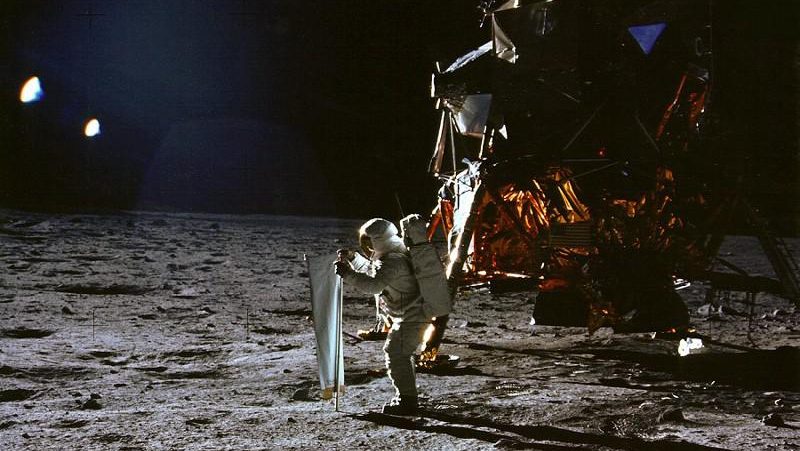Why Is Asteroid Dust So Black?
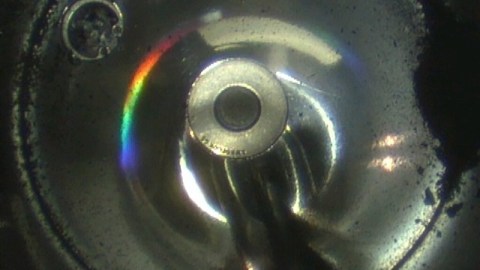
And what can it teach us about our Solar System’s earliest days?
In many ways, astronomy is unique among the sciences. In every other field, you have the ability to design an experimental test you can perform, determining which among your theories, hypotheses, and ideas are correct after you make the critical measurements. From the social sciences to medicine to biology, chemistry, and physics, performing these experiments in a controlled environment is a key step. In astronomy, however, we don’t get to choose which experiments are performed. Our laboratory is the Universe, and all we can do is observe the phenomena that nature — and the limits of our instruments — provide us with.
At least, that was the case in astronomy up until recently, when a notable exception came to the forefront. Since the dawn of the space age, we gained the ability to escape the bonds of our planet’s gravity. As a result, we’ve become capable of exploring the Solar System, sampling moons, planets, and even asteroids and comets directly, in some cases even returning those samples to Earth. Even though fragments of asteroids and comets have fallen to Earth in the past, there’s nothing quite like grabbing a pristine sample and bringing it home. To the surprise of many, the recent asteroid sample returned by the Japanese Hayabusa-2 probe is almost pitch black. Here’s the reason why.
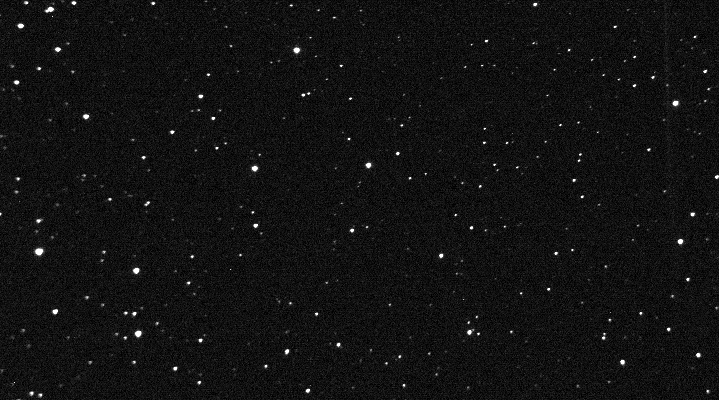
When we spot the planets, moons, and other visible bodies in our Solar System — including even the stars located far beyond — they largely appear white to our eyes. There are notable exceptions, as Mars is notoriously red, Earth appears blue from space as do Uranus and Neptune, Saturn is an overall yellowish color, and stars range from red to orange to yellow to white to blue. Nevertheless, the majority of objects appear white: the color of reflected sunlight or emitted light from a largely Sun-like star.
What this means, of course, isn’t that the objects are actually white in nature. Rather, it means that the total amount of light leaving them and arriving at our eyes is neither redder nor bluer in relative color than the light we normally receive from the Sun. When you look at the Moon in the night sky, it appears white in nature, with some areas appearing brighter and other areas appearing darker. In reality, however — and this is something we learned firsthand not just from visiting the Moon, but from bringing lunar samples back to Earth — the Moon itself is a dark grey color. On average, the Moon reflects only ~12% of the sunlight that strikes it.
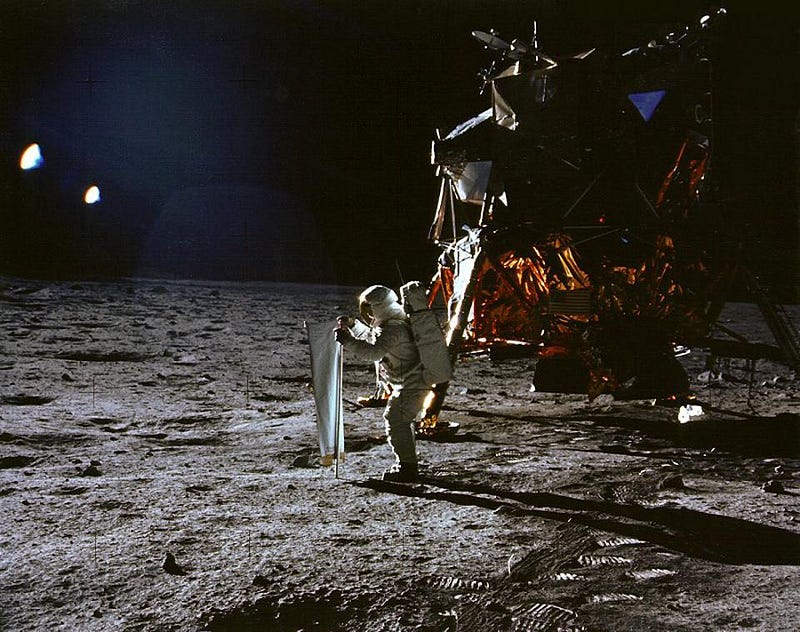
It turns out that planets reflect an enormously varied amount of sunlight, dependent on their composition and other properties. Of the eight major planets in our Solar System, only Mercury is less reflective than the Moon, at 11%. Earth, largely due to the polar icecaps, glaciers, seasonal snow-and-ice cover, and the presence of highly reflective clouds, reflects about ~30% of the sunlight that strikes it. And Saturn’s icy moon, Enceladus, holds the honor of being the most reflective known body in the Solar System: at ~99% reflective. This level of reflectivity is known as albedo: with an albedo of 1 being 100% reflective and an albedo of 0 reflecting no light at all.
This is actually something we can measure remotely for a simple reason: we know how sunlight spreads out once it leaves the source. If you move twice as far away from the Sun, it appears just ¼ as bright as it did before, since it would take double the length and double the width — four times the surface area — to catch the same amount of light. If you move three times as far away from the Sun, an object will catch just one-ninth the amount of light. Sunlight spreads out in a spherical shape as it leaves the source, explaining why our most distant, far-flung spacecraft missions rely on nuclear generators, not solar panels.
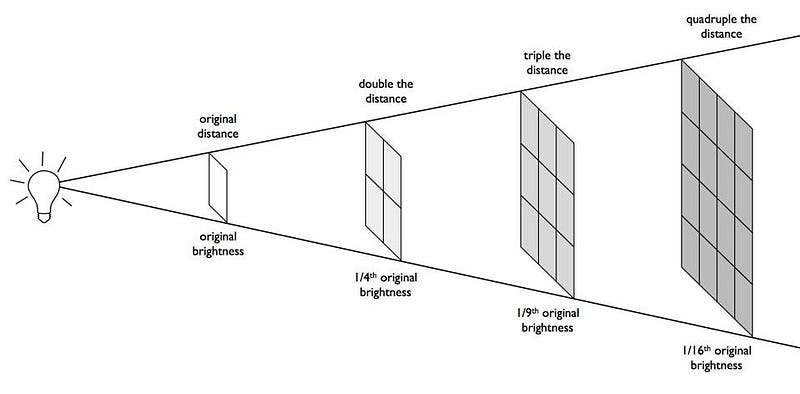
In addition, the farther away an observer is from a reflected object, the fainter it appears. This is not the same effect as being farther from the source of light that an object reflects, but is additional and cumulative. Take Saturn and Jupiter, for example. On December 21st, these two worlds will align in the sky from Earth’s perspective, appearing at the same location to within 0.1° of one another. In reality, Saturn is almost the same physical size as Jupiter, but is about twice as far away from both the Earth and the Sun as Jupiter is. While Jupiter is at about 5 times the Earth-Sun distance, Saturn is more like 10 times that distance.
But if you look up at Saturn and Jupiter together in the sky, Saturn isn’t a mere ¼ as bright as Jupiter, but appears more like 10–20 times fainter. The reason is threefold:
- Jupiter is slightly larger and slightly more reflective than Saturn, causing it to appear a little brighter than our Solar System’s second-largest planet.
- Saturn is twice as far as Jupiter, meaning that the sunlight arriving at Saturn is only about ¼ as intense as the sunlight striking Jupiter.
- And, in order for that light to get back to Earth, it has to travel about twice as far from Saturn as it does from Jupiter; that extra distance means the brightness is suppressed by yet another factor of ¼.
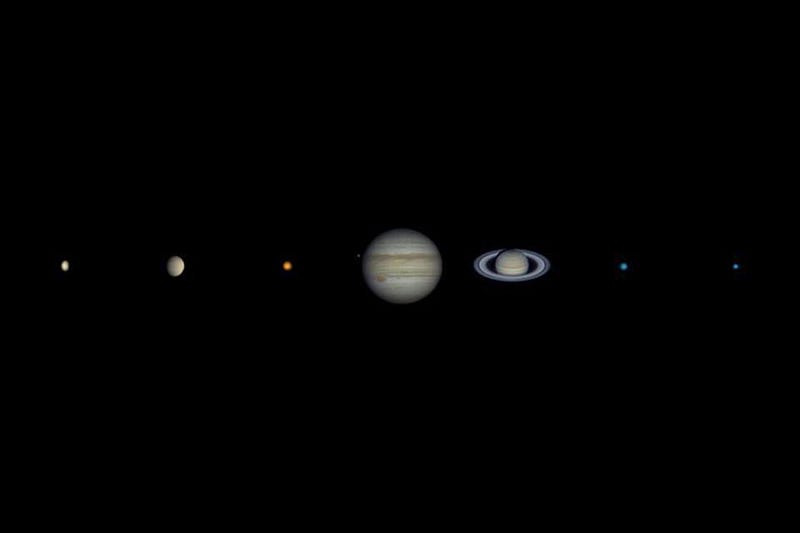
When we look at the asteroids in our Solar System, because of how well we understand gravity and how successful we are at reconstructing their orbits, we can know to a very small uncertainty how intrinsically reflective an asteroid is. Most of the asteroids that we know of — about 3 out of every 4 asteroids — are carbonaceous asteroids, which are extremely intrinsically dark. They only reflect between 3% and 9% of the sunlight that strikes them, and are very depleted in terms of volatile materials: things like hydrogen, helium, and various ices that are easy to boil off. The other main asteroid types are made largely of metallic iron or a mix of iron with silicates, and are much more reflective than the carbonaceous asteroids.
Although we’ve visited many asteroids over the years, we’ve only ever done a sample return mission once before: when last decade’s Hayabusa mission visited asteroid Itokawa and brought back a sample to Earth. All the other experiments on asteroids we’ve performed on Earth have only been possible because we’ve recovered meteorites that had an asteroidal origin. But recovering asteroid material in space, before it’s traveled through Earth’s atmosphere and impacted our surface, is a very different story.
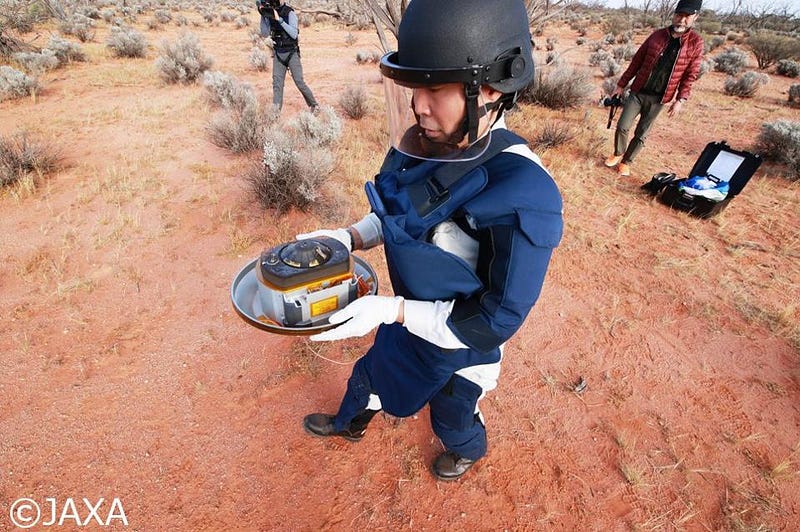
When we opened up the sample container from Hayabusa-2, which visited the carbonaceous asteroid Ryugu, the “black, sand-like material” found inside fit very well with what we expected. The surface of a road, when newly paved with black asphalt, has an albedo of about 0.04, corresponding to 4% reflectance. Black acrylic paint is a little bit worse, with an albedo of 0.05, corresponding to 5% reflectance. The material found inside Hayabusa-2 is extremely consistent with coming from an asteroid of the darkest type known.
Which is excellent, because that’s precisely what we intended to do. There are a series of mysteries we’re hoping to answer about our early Solar System, and the Hayabusa-2 mission is an incredible scientific opportunity. What we did was send Hayabusa-2 about 300 million km away — about twice the Earth-Sun distance — into the asteroid belt, where it encountered asteroid Ryugu. After collecting surface dust, Hayabusa-2 fired an impactor into the asteroid, kicking up pristine, sub-surface material, which it also collected. Both sets of material were returned safely back on Earth, where they have now been recovered and await analysis.
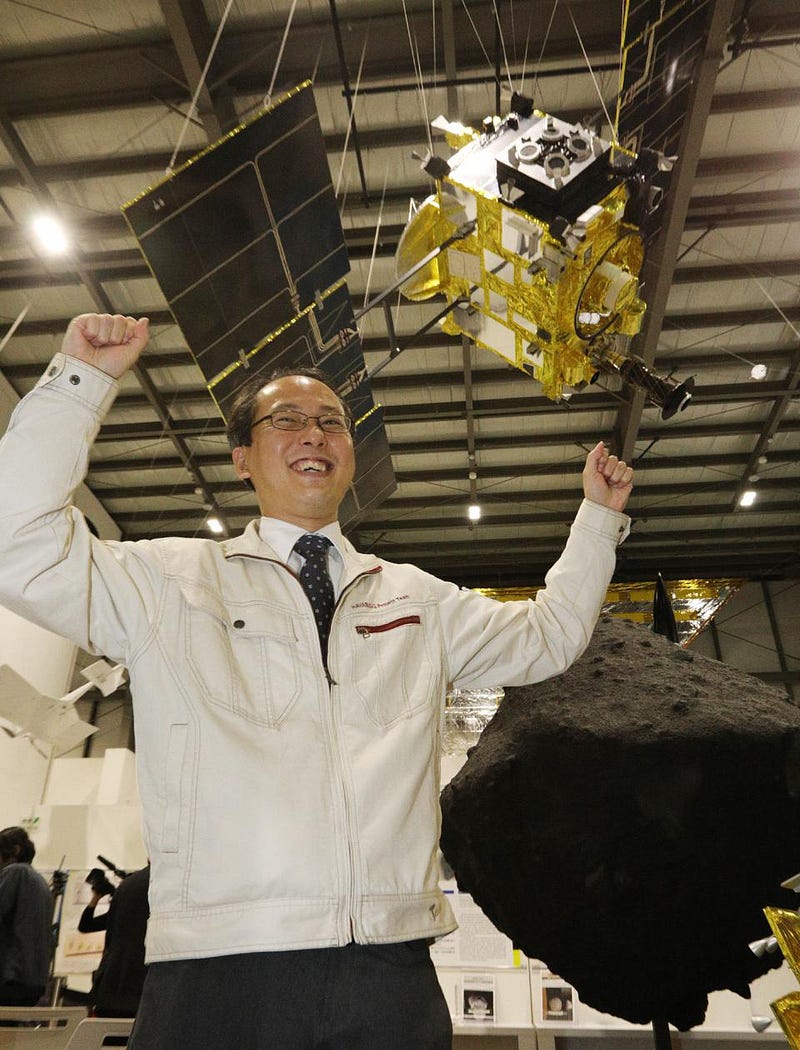
We know that asteroids are some of the most pristine material left over from the initial days of the Solar System. Some 4.6 billion years ago, our Solar System was a pre-solar nebula, where a central cloud of gas collapsed to form a star. The outer material formed a protoplanetary disk, where tiny gravitational instabilities grew and attracted mass. The largest-mass clumps grew into planetary systems, while the asteroid belt and Kuiper belt remained as collections of numerous bodies too low in mass to form a true planet. Even if we were to combine every object in the asteroid belt, it would fail to be even half as large as our Moon.
These asteroids, then, are thought to be relics from the earliest days of our Solar System, similar in composition to the mantles of planets. It’s also possible that some of the most important material that we have here on Earth’s surface arrived when asteroids bombarded our planet after we’d already formed. Is that where Earth’s water came from? Is that where the complex, organic material that gave rise to life originated? Is this asteroid really 4.5–4.6 billion years old, as we think it should be? And does this sample contain chondrules: round grains thought to have formed in the extremely early Solar System?
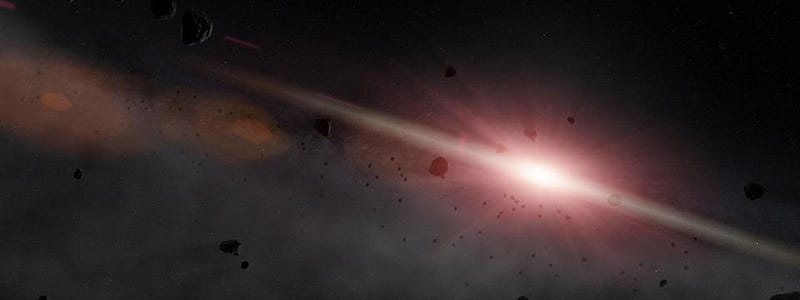
The chondrule mystery is fascinating, because there’s a particular radioactive decay that happens in them. Of all the chondrules we’ve found in meteorites here on Earth, they’ve all formed within an incredibly narrow window: about 4.567 billion years ago, with an uncertainty of only ±0.001 billion years on that. It isn’t known, however, whether these chondrules formed before the planets did or afterwards, as we don’t know the early history of our Solar System very well due to a lack of evidence. If Ryugu has these chondrules, that likely tells us they formed before the planets did; if not, perhaps they only formed afterwards.
One of the holy grails of the science of planet formation is to understand how we went from a protoplanetary disk of tiny grains to the mature Solar System we have today. In order to get there, we need to understand the order in which things happened. When our young Sun was surrounded by mere gas, the first thing that formed were calcium-aluminum-rich inclusions (CAIs), which show up as specks of white in practically all meteorites. Were chondrules the second thing to form? And if so, how did they form; they require very high temperatures followed by fast cooling. If this occurred, we don’t yet have a working model as to how.
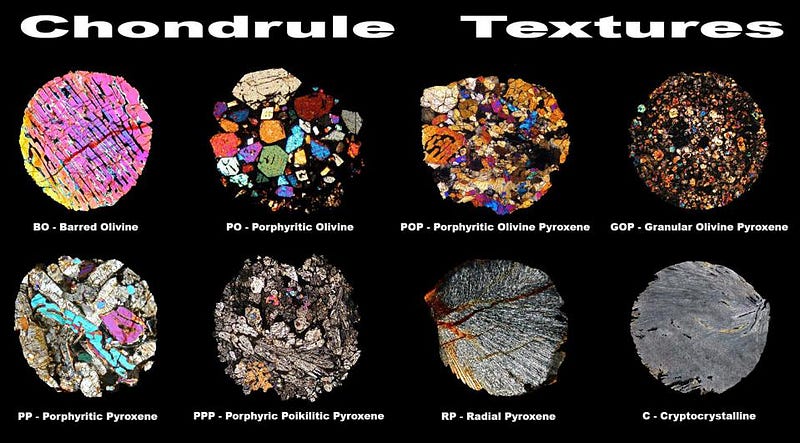
Will the chondrules found from Ryugu be similar to the chondrules we’ve found on Earth, or will they be unique: perhaps only a type found before atmospheric entry? Will there be any chondrules at all? And will OSIRIS-REx, scheduled to return from asteroid Bennu in 2023, reveal something consistent, complimentary, or conflicting with Ryugu when it comes back?
We’re also poised to learn how, after ~4.6 billion years, the solar wind has affected the surface of an asteroid. Have these solar wind protons struck oxygen atoms on the asteroid, creating water molecules and enabling the reactions that are only possible in an aqueous environment? Were asteroids and/or comets responsible for bringing water to Earth? Will the deuterium levels we find (relative to hydrogen) be consistent with deuterium found on Earth, or — like comet 67P/Churyumov-Gerasimenko (which Rosetta visited) — will it have too much deuterium to be Earth-like? And, like many asteroids, will it have complex organic molecules, a wide variety of amino acids, and even fascinating molecular structures that aren’t found naturally here on Earth?
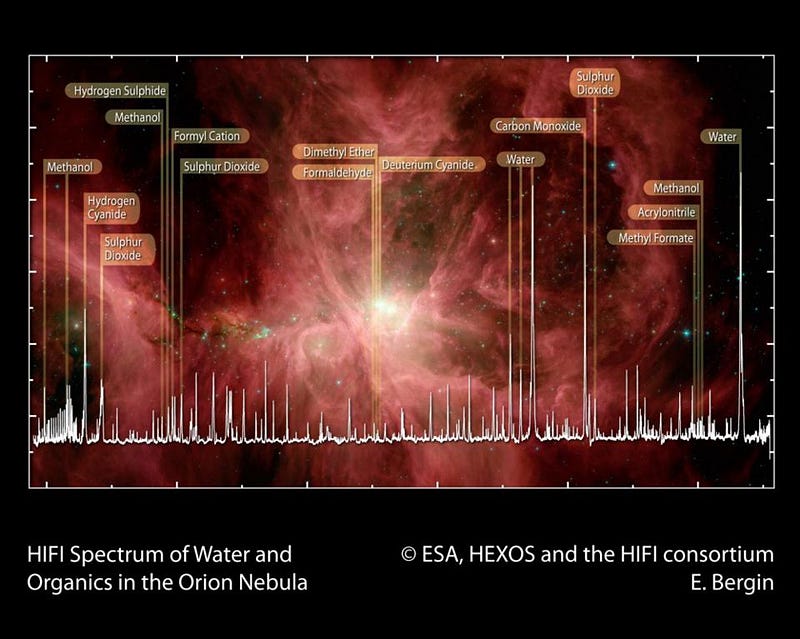
This black, sand-like material holds the answers. Now that the first sample from Hayabusa-2 has returned, which collected material from both the surface and beneath the surface of asteroid Ryugu, the all-important analysis phase begins. Inside these tiny grains of material, which itself is likely older than planet Earth, signatures of the earliest days of our Solar System can be found. Will we finally gain a clue as to the origin of these very old round grains, chondrules, or will these observations only deepen the mystery? Will we learn about the origin of Earth’s water or organic compounds? Will we even gain insight into the origin of life on our planet?
With each new measurement and discovery, the body of our scientific knowledge grows, giving us an unprecedented opportunity to grow and refine our picture of how things came to be as we observe them today. Our Solar System has a rich history, most of which has largely been erased by the relentless passage of time. Sampling this early, pristine material and returning it to Earth for analysis has the opportunity to shed light on our earliest days as never before. No matter what it is that we find, this is one giant leap towards peeling back the veil of the unknown shrouding one of our deepest mysteries: the original conditions found on planet Earth right after its formation. That’s a scientific advance worth celebrating, no matter what the data winds up teaching us.
Starts With A Bang is written by Ethan Siegel, Ph.D., author of Beyond The Galaxy, and Treknology: The Science of Star Trek from Tricorders to Warp Drive.




